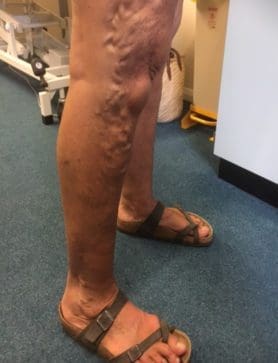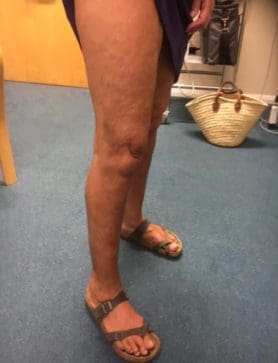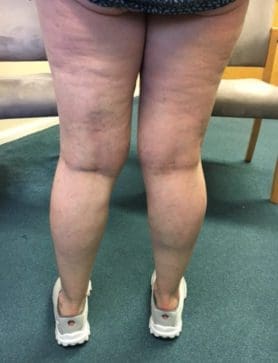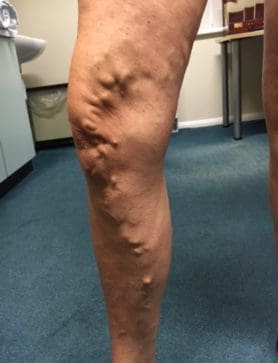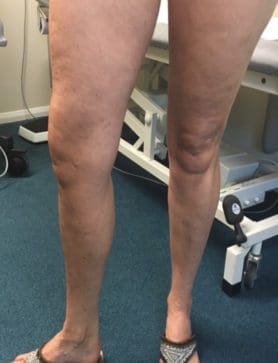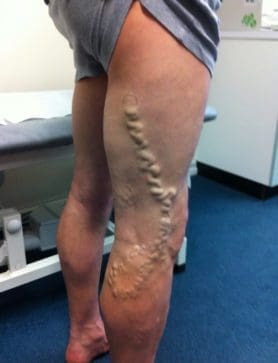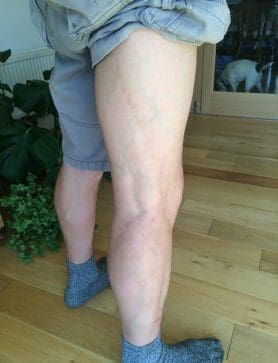Mini-Phlebectomy
Not all endovenous procedures require phlebotomies to achieve an excellent result. However, the treatment of the varicose veins themselves by removal is usually said to result in a better cosmetic outcome, and is thus optimal, particularly in procedures mandating local anaesthesia for truncal ablation. The alternative would be delayed treatment with ultrasound-guided foam sclerotherapy, though that would make the course of treatment longer, and may result in patchy skin discolouration.
What to Expect
Mini-phlebectomy can take 20-40 minutes depending on the extent of varicose veins. After the procedure, you will be wrapped for 2 days and wear a support stocking for two weeks. There will be some bruising, which is normal, and will completely resolve in four to six weeks. You may also experience some mild discomfort, tingling and/or tightness in the treated leg, which typically resolves in a few weeks.
After treatment of the diseased veins, healthy veins restore the normal flow of blood to the leg. As this happens, symptoms from the varicose veins improve.
Enquire Now!Fees
Outpatient consultations depend on length and complexity, and range from £150-220 for a new client. Follow-up consultations range from £100 to £180.
For BUPA and AXAPPP-insured clients, their permitted fees are adhered to. An additional cost is made for a venous ultrasound scan, if required, again depending on length and complexity, ranging from £100 to £150.
Procedures are billed in accordance with BMI costs which ought to be available through their website. A few of the more frequent procedures are listed below:
- Unilateral endovenous laser ablation and phlebectomies £2435
- Vein trunk endoluminal bioadhesive closure alone £3750
- MOCA alone £2750
- Ultrasound-guided foam sclerotherapy of multiple branches £700
- Microsclerotherapy single leg £300 bilateral £550
These all include all follow-up attendances and scans. These prices are correct at the time of writing and may differ at different BMI establishments.w
Enquire Now!
